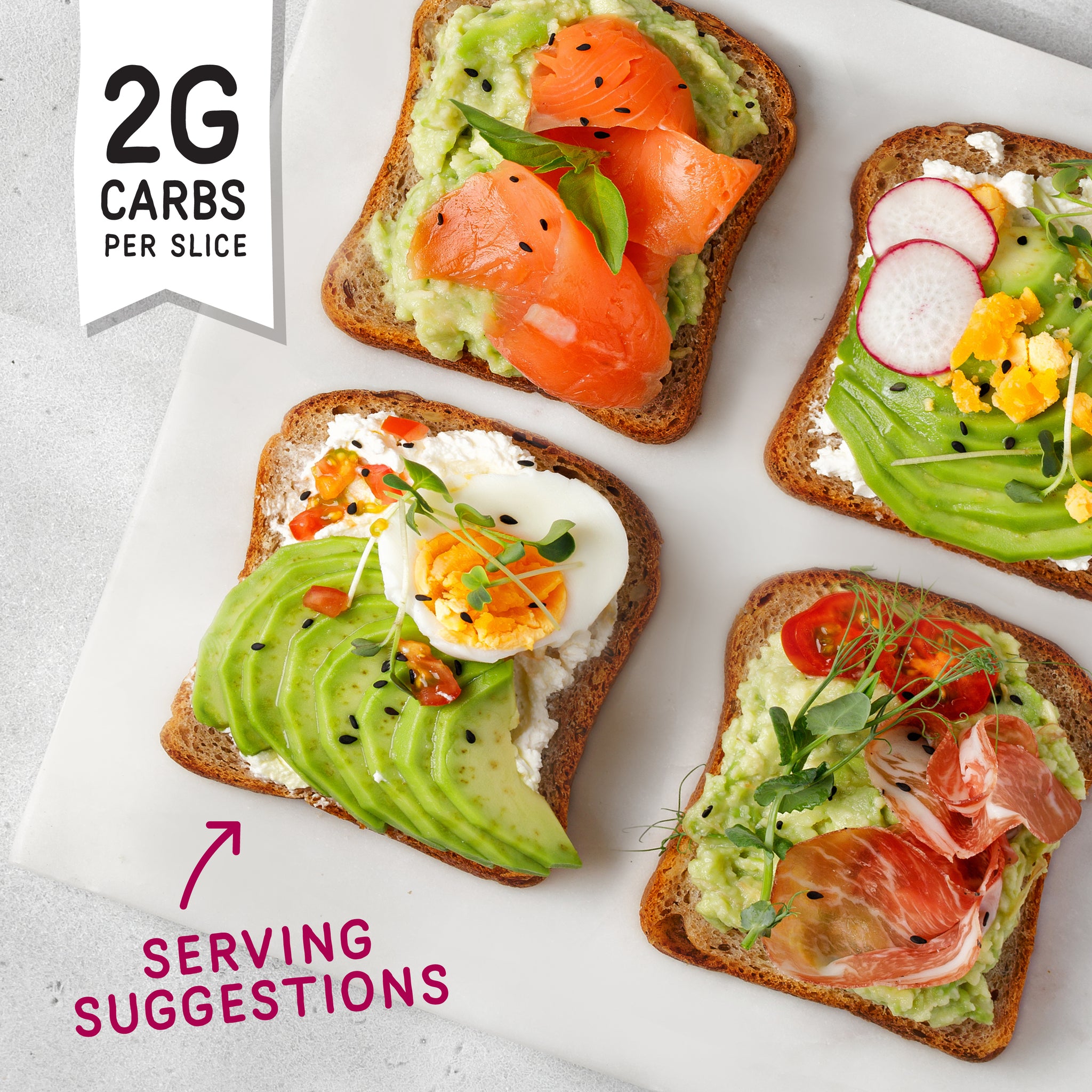Bread has been a mainstay in kitchens across the world. But it was for many years viewed as a threat to weight loss and healthy living. The stigma is beginning to change, thanks to the introduction of calorie bread. The calorie bread was designed to be light than the thick, heavy loaves of the past without compromising on quality or texture. Bakers redefine bread by incorporating the nutrients of flaxseeds, for instance, and plant-based protein. Instead of being an indulgence that dieters avoid, calorie bread is becoming a daily essential that allows people to enjoy sandwiches, toast, and wraps without the guilt. This is especially for those trying to manage their calories and portions while enjoying food that is comforting.

Image credit: fitbakes.co.uk
No Carb Bread: A Promise of No Carb Bread
While bread that is calorie-free is created to help reduce calories, no carb bread is meant to reduce carbs almost completely. Although carb-free bread is very rare, these products are remarkably close to it by replacing wheat flour traditional with alternatives like almond flour, coconut flour, and psyllium husk. It’s a loaf that is savoury and tastes like normal bread. It’s just not packed with the carbs that can be detrimental to ketogenic diets or cause blood sugar levels to increase for diabetics. No carb bread can be an incredible treat for those who had to abandon toast and sandwiches in the morning. It lets you keep your routines as normal while staying on track with strict dietary guidelines. Bread doesn’t only serve the purpose of nutrition, it helps restore a sense normalcy for those who thought bread was permanently off their menu.
Low Carb Breads and the Nutriental Shift
Breads that are low in carbs are a good alternative to traditional loaves or no carbohydrate breads. Low carb breads offer a healthy alternative to traditional loaves. They do not completely eliminate carbs, but they do cut down on them while increasing fiber and protein. What makes them stand out is their seeds content, usually up to 17%, which adds the texture, healthy fats and essential nutrients like omega-3 acid. The shift towards nutrient-rich bread marks an important change in the demand of consumers. The people no longer crave empty calories, but instead foods which are good for their health. Low carb breads respond to that need by offering the benefit of weight control, improves digestive health, and sustains energy levels throughout the day. For fitness enthusiasts they can be an easy way to boost the intake of protein and keep carb levels in check, making them ideal for muscle recovery and balanced nutrition.
Wraps with low calories to Modern Living
Wraps for sandwiches that are low-calorie are an ideal choice for people who live in a frantic environment. These wraps, in contrast to heavy tortillas and pita breads, that can be loaded with calories, are light practical, flexible designed for those in motion. With fewer than 100 calories each they can accommodate rich in nutrients fillings like lean meats, fresh veggies or plant-based proteins, without adding weight. They’re not only distinctive in terms of calories but also in the ways they can be used. They can be used as a base for pizza, lunch wrap, or if want to get creative or make a breakfast burrito. For busy families, athletes, or professionals, low-calorie sandwich wraps can be a good solution to remain nourished and satisfied, without having to resort to fast food. They’re an excellent illustration of how eating a healthy diet does not have to be restrictive or complicated. They can also be delicious, easy to prepare and sustainable.
Conclusion Bread Without Compromise
The bread industry is evolving, and represents a wider shift towards smarter, health-conscious eating. Breads that are high in calories help you shed weight without sacrificing comfort food. No carbohydrate bread helps those on diabetic and ketogenic diets. Breads that are low in carbs are a healthy middle ground for active lifestyles. Sandwich wraps that contain low calories are convenient without sacrificing nutrition. Together, these new innovations show that bread does not have to be a hindrance to good health, but rather a partner in it. If you’re looking for a the perfect balance between taste and health the new generation of bread delivers the best of both worlds.
